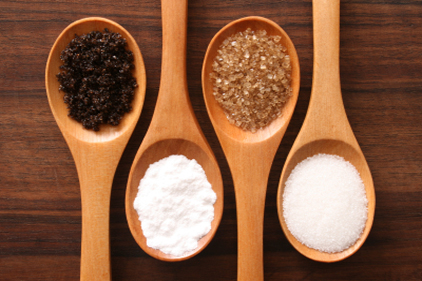Study: Maltodextrin May Worsen Crohn’s Disease

However, researchers stressed that the findings are preliminary and the tests were conducted in the lab, not in people, so it is too soon to advise those with the inflammatory bowel disease to avoid maltodextrin.
Maltodextrin is a white powder used in many processed foods as a thickener or a filler, including in artificial sweeteners, along with cereal, canned fruits, packaged desserts, instant pudding, sauces and salad dressings. Maltodextrin, typically derived from corn or wheat starch, is also used in some medication coatings.
In the study, researchers placed several artificial and natural sweeteners in a dish along with E. coli bacteria taken from people with Crohn's disease. While E. coli is commonly found in the digestive tract of humans, it is usually found in the large intestine, explained senior study author Christine McDonald, assistant staff in the pathobiology department at the Cleveland Clinic's Lerner Research Institute. Prior research has found that people with Crohn's tend to have E. coli in their small intestine.
Though the precise role that E. coli plays in Crohn's is unknown, it is thought that the bacteria may contribute to the inflammation that marks the condition.
When grown in the dish with artificial sweeteners (one containing aspartame, dextrose and maltodextrin, and another containing sucralose, dextrose and maltodextrin), the E. coli grew stickier, forming a thick biofilm, according to the researchers. The same did not happen with the steviol-based natural sweetener, which is made from the leaves of a South American plant and does not contain maltodextrin.
Researchers then repeated the experiments, culturing E. coli with maltodextrin alone, and the same sticky biofilm formed.
"In the lab, the E. coli becomes stickier, and it sticks to intestinal cells," said McDonald, who conducted the research with graduate student Kourtney Nickerson. "But we haven't tested this in animals to see if there is a particular amount you need to eat to have this effect. It may be that in people who have other risk factors for inflammatory bowel disease, this may tip them over the edge."
The study, which was funded by the U.S. National Institutes of Health, was presented at the Digestive Disease Week meeting in San Diego.
The sticky biofilm may also mean there are more bacteria on the lining of the intestines, McDonald said.
No specific diet has been shown to prevent or treat Crohn's disease, according to the U.S. National Digestive Diseases Information Clearinghouse. However, the incidence of Crohn's has been rising in the U.S. in recent decades, leading researchers to suspect that something about the modern American diet is contributing.
In addition, many people with the disease notice that certain foods or types of foods seem to make their symptoms worse.
McDonald said people with Crohn's may want to try avoiding maltodextrin and see if their symptoms improve, but she and Turner both said more needs to be learned before they recommend that people with Crohn's or a susceptibility to Crohn's avoid the additive.
"It's a very interesting and provocative finding, and [it] may tell us something about the bacteria and what is happening in the intestines, but it's really too preliminary to make any recommendations," Turner said.
A group representing the artificial sweetener industry said the finding was too preliminary to prompt any changes in how artificial sweeteners are made or sold.
"This study was done on cells in petri dishes, therefore it is not possible to apply these findings to humans," the Calorie Control Council said in a statement. "Even the researcher has stated that it is too early to conclude that maltodextrin promotes disease. Further research is needed before any human nutrition recommendations can be made."
Because this study was presented at a medical meeting, the data and conclusions should be viewed as preliminary until published in a peer-reviewed journal.
From the May 22, 2012, Prepared Foods’ Daily News
Looking for a reprint of this article?
From high-res PDFs to custom plaques, order your copy today!





